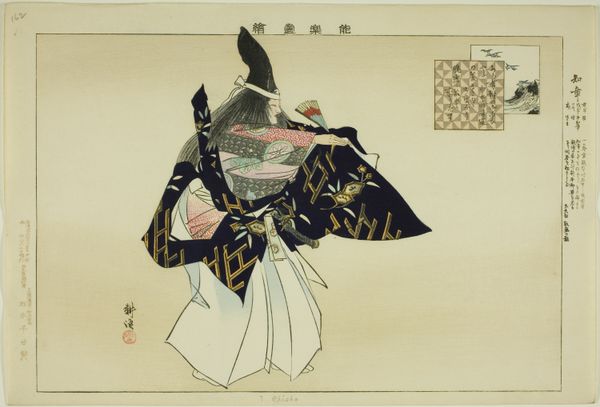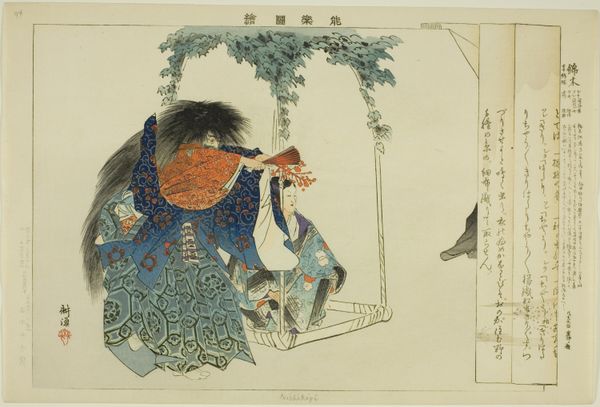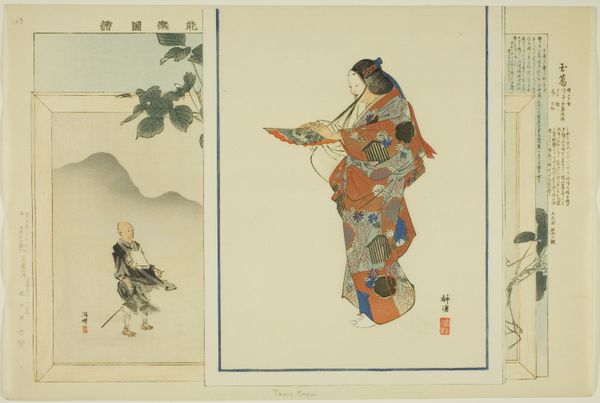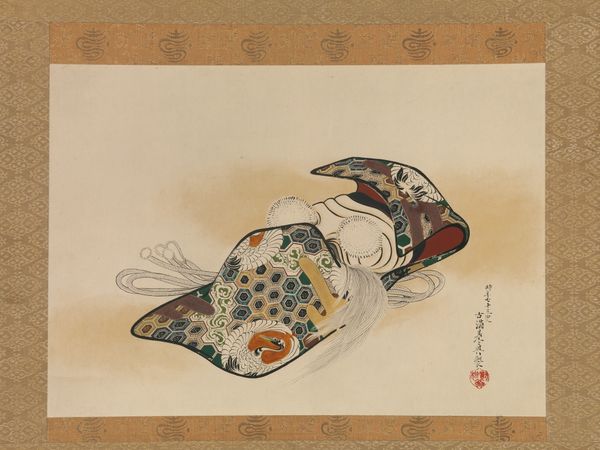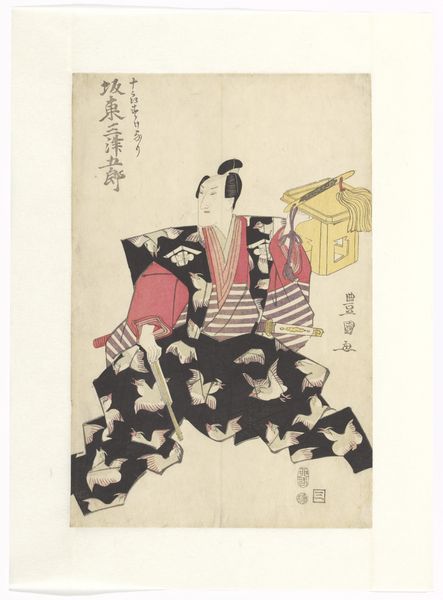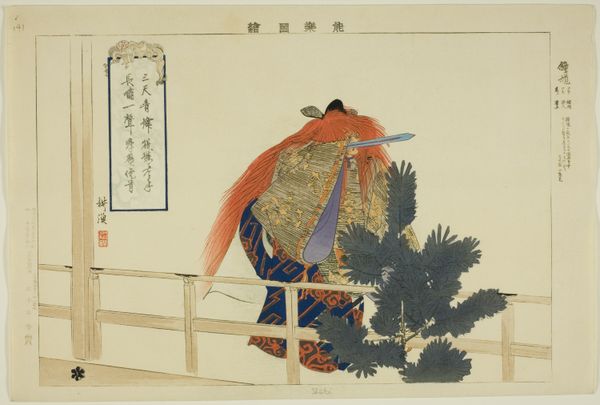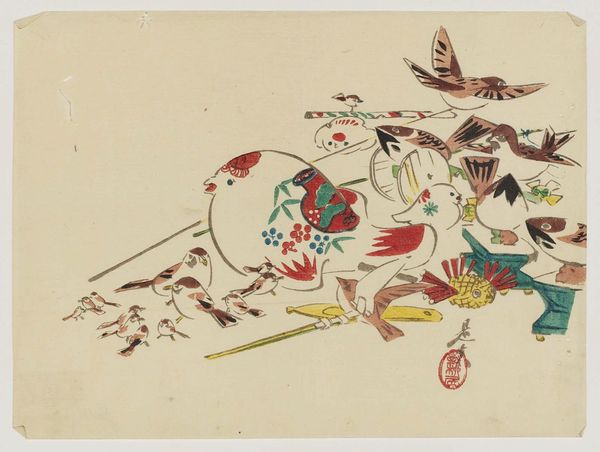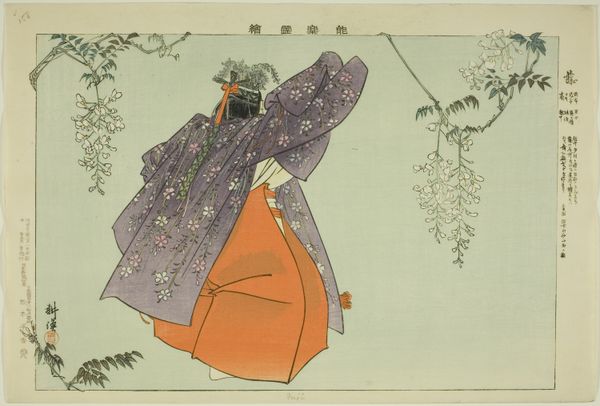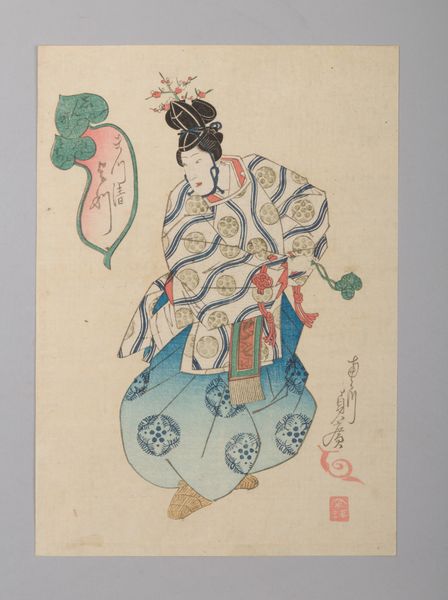
Kiyotsune, from the series "Pictures of No Performances (Nogaku Zue)" 1898
0:00
0:00
Dimensions: Approx. 25.2 × 37.4 cm (10 × 14 4/3 in.)
Copyright: Public Domain
Editor: This is "Kiyotsune, from the series "Pictures of No Performances (Nogaku Zue)", a woodblock print from 1898 by Tsukioka Kogyo. The figure is compelling, almost mournful. What do you see in this piece? Curator: Kiyotsune's story is one deeply woven into Japanese cultural memory. Look closely at his costume, and you see symbols layered upon symbols. Editor: Such as? Curator: The repeating geometric pattern, for instance. The pattern itself speaks to strength and longevity, reflecting a desire to endure even amidst turmoil. Notice also how his face is hidden by the fan. Is this a mask or a shield? Is he concealing his true emotions or projecting a carefully constructed image of stoicism? Editor: So the act of hiding is itself a symbol? Curator: Precisely! Noh theater often employs masks and stylized gestures to represent profound emotional states and transmit powerful stories. This single image evokes centuries of tradition. The artist isn't merely depicting Kiyotsune, but a distillation of the themes he represents: sacrifice, honor, and the ephemeral nature of life itself. Do you think knowing the story would deepen our appreciation of this print? Editor: Definitely! Seeing those layers of meaning makes the print far more impactful than just a pretty image. I'll be sure to explore that cultural background. Curator: Remember, symbols only resonate when we understand their context, it's like unlocking a secret language, isn't it?
Comments
No comments
Be the first to comment and join the conversation on the ultimate creative platform.

